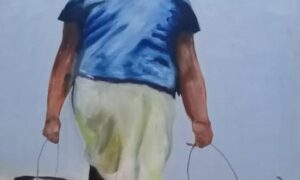Dentists use resin for a number of different procedures. From fillings to sealants it’s an impressively versatile material. In reality, much of the usability of its is thanks to the simple fact of the consistency of its. Resin, when used, is putty like material which might be easily molded to fit the contours and crevices of a tooth. While this loose structure has advantages, it in addition has costs. Throughout chewing functions the mouth and mouth is able to create as much as 200 pounds of pressure. With such a sizeable force tooth supplies must be incredibly powerful. This is where the dental curing light can be purchased in. A curing light is a gun like object which exposes resins to light. Doing this provides for the material to change from putty to some hardened state. Resin is a great chemical, but without the usage of curing lighting, many of its benefits will be lost.
What Sort of Light Do Dental Curing Lights Use?
Foremost and first, curing lights do not make use of ultraviolet light. Though the initial designs employed UV rays, as the risks of this had been discovered the design was modified. Instead models today use only visible light. Specifically, they normally use blue light. Even though the color of the light feels rather unimportant and simply an aesthetic feature, it is much from it. The scientific reason for it’s use is the fact that to harden, resin should start to polymerize. This may be done by exposing it to light frequencies between 450 as well as 490 nanomoeters. As virtually any science buff will tell you, this’s the precise wavelength of blue light.
What Kind of Light Do Dental Curing Lights Use?
What Precautions Should be Taken?
While dental curing lights are not inherently dangerous, there are many precautions that should be taken. For one, the greatest danger of light coverage is harm to the eyes. Therefore, it is crucial for both patient and doctor to wear some sort of eye protection. Next, gentle generates heat. While most lights should not cause a concern, some are decent enough to cause burning. For this reason it’s crucial to see to it that the brightness is not excessively powerful. Finally, as each resin has it’s own qualities, every one has requirements that are unique . To guarantee a proper and thorough polymerization dentists must understand the exact wavelength his particular resin responds to. Failure to do so can nullify the procedure.
What Precautions Must be Taken?
What Sorts of Procedures are Curing Lights Uses In?
Dental curing lighting fixtures are employed in an assortment of procedures which make use of acrylics and other resins. The majority of the use of its, nevertheless, is observed in 2 procedures-sealants and fillings.
What Types of Procedures are Curing Lights Uses In?
Tooth Restorations Dental restorations, more ordinarily named fillings, are methods in which a missing portion of a tooth is loaded in with a synthetic material. This strategy is utilized to be able to enhance the functionality, improve the appearance or perhaps regain the integrity of the best teeth whitening products canada – Tacomadailyindex officially announced -. They are generally split into the two subcategories of indirect and direct restorations.
Tooth Sealants-A tooth sealant is a preventative therapy used to help you safeguard enamel from decay. This’s achieved through a three step process. First, the tooth is cleaned and a bonding material is applied. Second, the tooth is covered with a plastic resin that acts as a defensive barrier. Third, a tooth curing light is utilized to polymerize the plastic sealant material.

















